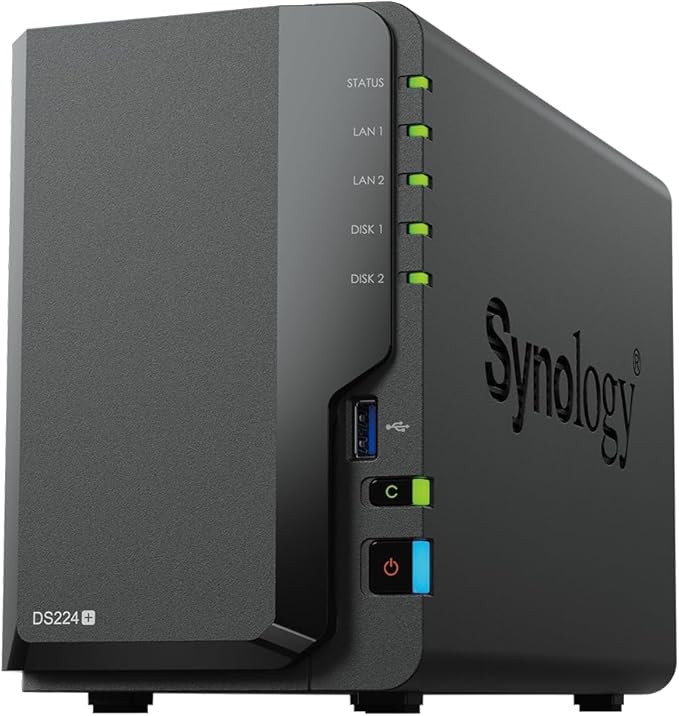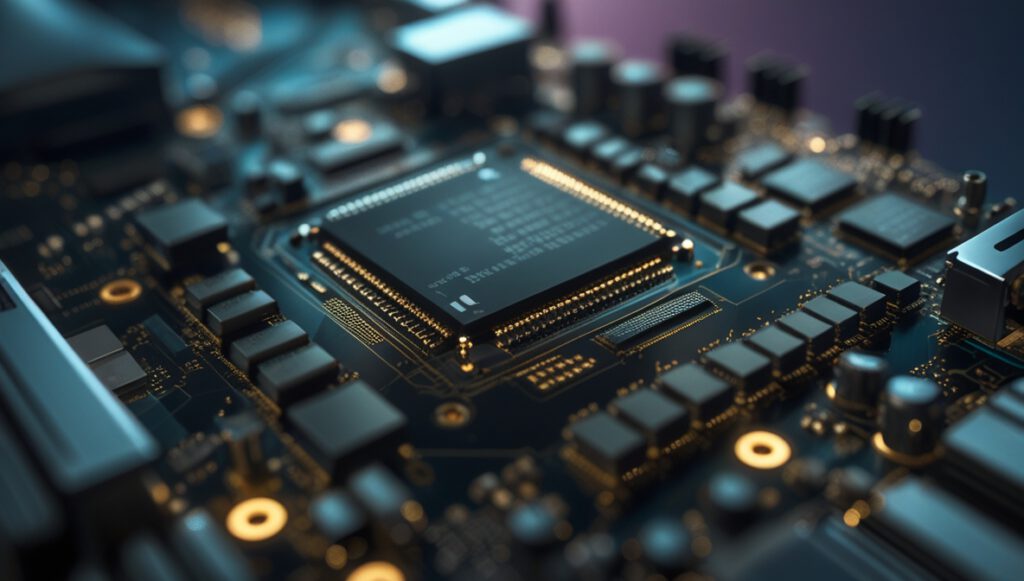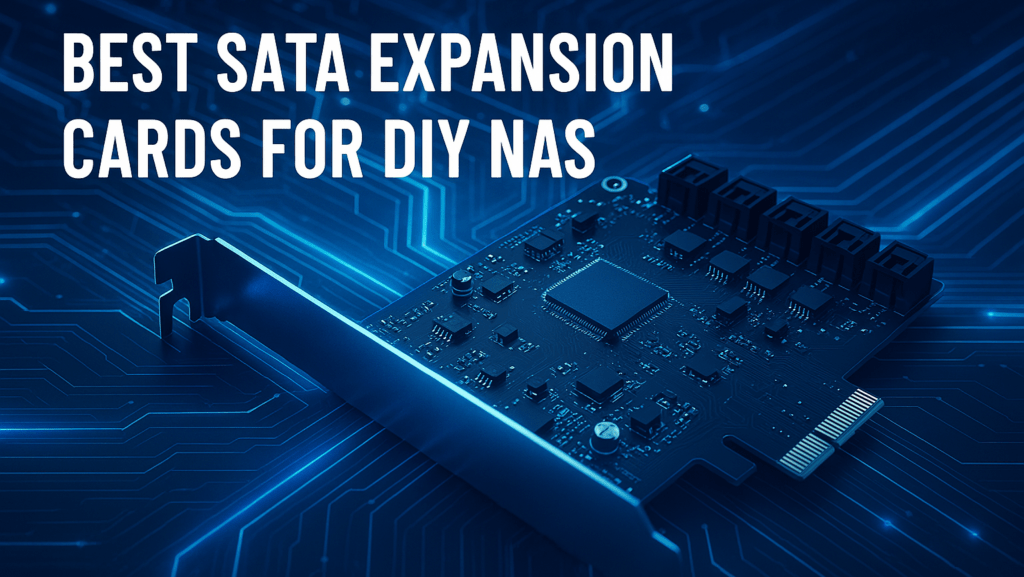While most readers of nasbuilds.com are enthusiastic about assembling their own custom NAS, there’s undeniable value in exploring off-the-shelf alternatives—especially for those just beginning their NAS journey. A prebuilt 2-bay NAS can be a turnkey solution: compact, quiet, energy-efficient, and designed to “just work” right out of the box. These systems often come with polished web interfaces, automatic updates, mobile apps, and robust backup solutions that make them ideal for users who want hassle-free storage.
In contrast, a self-built DIY NAS demands more effort and technical know-how but rewards you with unmatched flexibility and performance. You pick your own hardware, decide how much RAM and storage you need, and install an operating system that fits your use case—be it OMV, TrueNAS, Proxmox, or a custom Linux setup. It’s the best option for users who want to tinker, scale up over time, or run advanced services like Docker containers and virtual machines.
But what if you could get the best of both worlds? That’s where certain off-the-shelf NAS models stand out—not just as plug-and-play solutions, but as a starting point for deeper customization.
In this article, we compare two of the most talked-about NAS devices in the ~€300 range: the Synology DS224+ vs. Ugreen DXP2800. Both arrive fully assembled and ready to go, but they differ significantly in philosophy and flexibility. With Synology’s DSM offering arguably the most refined NAS software ecosystem, and Ugreen’s DXP2800 packing a surprisingly powerful Intel N100 CPU with room to grow—this contrast makes all the difference for power users and tinkerers.
Comparing Synology DS224+ vs. Ugreen DXP2800
 |  | |
| Feature | Synology DS224+ | Ugreen DXP2800 |
|---|---|---|
| CPU | Intel Celeron J4125 (4-core) | Intel N100 (4x x86, 3.4 GHz Boost) |
| RAM | 2 GB DDR4 (upgradable to 6 GB) | 8 GB DDR5 (expandable) |
| Drive Bays | 2x 3.5″ (Hot-Swap) | 2x 3.5″ (Hot-Swap) |
| Networking | 2x Gigabit LAN | 2x 2.5Gbit LAN |
| USB Ports | 2x USB 3.0 | 3x USB 3.2 + 1x USB-C |
| OS | DSM (proprietary) | Ugreen OS (Linux-based) / any OS |
| Expandability | Limited (some apps and upgrades) | Fully open: TrueNAS, OMV, Debian, Ubuntu |
| Buy (Affiliate*) | Buy on Amazon Buy on Newegg | Buy on Amazon Buy on Newegg |
Synology DS224+ – User-Friendly but Constrained
Synology has long been a household name in the NAS world, and the DS224+ is a classic entry-level product for home users. It features DSM, arguably the most polished NAS OS on the market, with a wide selection of apps and an intuitive interface.
Pros:
- Very easy setup
- Full suite of backup, media, and cloud apps
- Excellent mobile app ecosystem
Cons:
- Limited Docker and virtualization capabilities
- RAM is only partially upgradable
- No support for alternative OS
- Moderate performance compared to x86 alternatives
For users who just want something that works and don’t plan to dig deeper, the DS224+ is solid. But you’re still largely locked into Synology’s ecosystem and limitations.
Ugreen DXP2800 – Power and Freedom
The DXP2800 is Ugreen’s debut NAS hardware, and it’s surprisingly impressive: a modern Intel N100 CPU, 8 GB DDR5 RAM, dual 2.5Gbit LAN, and the freedom to install any OS you like.
Pros:
- x86 architecture supports TrueNAS, OMV, Proxmox, Ubuntu, and more
- Expandable RAM
- High-speed networking and USB ports
- Root access and full system control
Cons:
- Stock Ugreen OS is basic and still evolving
- Setup requires more technical know-how
- No hardware RAID controller (software RAID only)
If you’re even mildly interested in customization, self-hosting apps, or experimenting with different NAS operating systems, the DXP2800 gives you a huge performance and flexibility advantage.
Synology DS224+ vs. Ugreen DXP2800 – Real-World Differences That Matter
The Synology DS224+ excels as a seamless, user-friendly experience. With its DSM operating system, even beginners can get a NAS up and running in minutes. DSM includes polished tools for backups, media streaming, remote access, and user management—all tightly integrated and supported by Synology’s mature ecosystem. However, what you gain in polish, you lose in flexibility. While the Intel Celeron J4125 is a competent CPU, its upgrade potential and Docker/virtualization performance are limited. Moreover, the inability to run alternative OSes or make deep system changes means you’re mostly confined to what Synology provides.
In contrast, the Ugreen DXP2800 is built for power and potential. Its Intel N100 CPU delivers desktop-class performance for services like Plex, Docker containers, or even virtual machines. The 8 GB of DDR5 RAM (with expandability) and dual 2.5Gbit LAN make it ideal for heavier workloads. It can easily run dozens of Docker containers—enabling services like Plex, Immich, Paperless-ngx, Nextcloud, and more. Most importantly, the system is wide open—you can wipe the included Linux-based OS and install OpenMediaVault, TrueNAS, or any Linux distro of your choice.
What makes it even more impressive is that all this power is packed into a beautifully compact, lightweight chassis with hot-swappable drive bays. You get server-grade flexibility in a form factor that’s as stylish and convenient as it is capable. For users who want to explore, build, and tinker, the DXP2800 offers a NAS that’s as close as it gets to DIY—without reaching for a screwdriver.
Conclusion: Ugreen Wins for DIY-Minded Users
If you want a simple, plug-and-play NAS and don’t plan to change anything, the Synology DS224+ is a comfortable and reliable choice.
But if you’re looking to grow, experiment, and truly own your setup, the Ugreen DXP2800 is the clear winner. For the same price, you get:
- A more modern and efficient CPU (Intel N100 vs. Celeron J4125)
- Four times the RAM—and it’s upgradeable
- Dual 2.5G networking and faster USB ports
- Full freedom to install and run your OS of choice
The DXP2800 isn’t just a NAS—it’s a compact, energy-efficient server in a NAS chassis. And that’s exactly what makes it such a compelling option for aspiring DIY NAS builders


